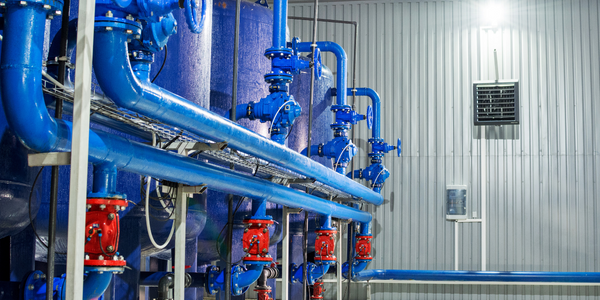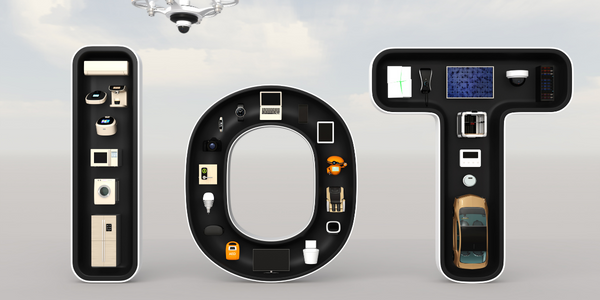Technology Category
- Functional Applications - Enterprise Asset Management Systems (EAM)
- Functional Applications - Warehouse Management Systems (WMS)
Applicable Industries
- Cement
- Equipment & Machinery
Applicable Functions
- Quality Assurance
- Warehouse & Inventory Management
Use Cases
- Asset Health Management (AHM)
- Asset Lifecycle Management
About The Customer
The customer is a leading electrical construction company on the West Coast with extensive experience across all industry groups and delivery models. The company operates in various sectors, including tech office spaces, historical renovations, high-rise commercial and residential towers, and industrial and manufacturing process facilities. The company manages over 40,000 assets across two locations, including construction tools and IT devices. The company was struggling with asset management, particularly tool tracking and auditing, which was a time-consuming and inefficient process.
The Challenge
The case study revolves around a leading electrical construction company on the West Coast, managing over 40,000 assets across two locations. The assets include construction tools and IT devices. The company was grappling with the challenge of tracking these assets, which was a time-consuming process. The manual workflows for tool tracking often led to discrepancies between the report and the tools being returned. The company was also experiencing tool fade, i.e., the loss of tools without a clear understanding of what was happening to these items. The average cost of replacing these tools ranged from $20,000 to $50,000. The auditing process was another challenge. The company would print a report of the tools needed for the job, handwrite the names of items or take pictures of their barcodes, a process that would take an entire day's work for 2-3 people. However, without a way to aggregate this data and create audit trails, they were unable to find any data trends from these audits or pinpoint the source of the problem.
The Solution
The company adopted Asset Panda in 2017 to manage their California warehouse and later expanded its use to their Seattle location in 2018. Asset Panda's customization was a key factor in their decision. The company used Asset Panda to track the construction tools and IT devices. The new process involved using the Asset Panda mobile app for tool returns. The Field Manager would scan the items to be returned, which would generate a transaction report sent to the local warehouse. The warehouse would then dispatch a driver to retrieve the items from the job site. The driver would check the assets against the transaction report before returning to the warehouse. Once back at the warehouse, the driver would complete the tool return, generating another transaction report shared with the General Foreman of the job site. The Warehouse Manager would then reconcile any discrepancies. The company also refined their auditing process by creating an Audit Request Form. Administrators or Warehouse Managers would assign the audit to the Field Manager to conduct through the Asset Panda mobile app.
Operational Impact
Quantitative Benefit

Case Study missing?
Start adding your own!
Register with your work email and create a new case study profile for your business.
Related Case Studies.

Case Study
Smart Water Filtration Systems
Before working with Ayla Networks, Ozner was already using cloud connectivity to identify and solve water-filtration system malfunctions as well as to monitor filter cartridges for replacements.But, in June 2015, Ozner executives talked with Ayla about how the company might further improve its water systems with IoT technology. They liked what they heard from Ayla, but the executives needed to be sure that Ayla’s Agile IoT Platform provided the security and reliability Ozner required.

Case Study
IoT enabled Fleet Management with MindSphere
In view of growing competition, Gämmerler had a strong need to remain competitive via process optimization, reliability and gentle handling of printed products, even at highest press speeds. In addition, a digitalization initiative also included developing a key differentiation via data-driven services offers.

Case Study
Predictive Maintenance for Industrial Chillers
For global leaders in the industrial chiller manufacturing, reliability of the entire production process is of the utmost importance. Chillers are refrigeration systems that produce ice water to provide cooling for a process or industrial application. One of those leaders sought a way to respond to asset performance issues, even before they occur. The intelligence to guarantee maximum reliability of cooling devices is embedded (pre-alarming). A pre-alarming phase means that the cooling device still works, but symptoms may appear, telling manufacturers that a failure is likely to occur in the near future. Chillers who are not internet connected at that moment, provide little insight in this pre-alarming phase.

Case Study
Premium Appliance Producer Innovates with Internet of Everything
Sub-Zero faced the largest product launch in the company’s history:It wanted to launch 60 new products as scheduled while simultaneously opening a new “greenfield” production facility, yet still adhering to stringent quality requirements and manage issues from new supply-chain partners. A the same time, it wanted to increase staff productivity time and collaboration while reducing travel and costs.

Case Study
System 800xA at Indian Cement Plants
Chettinad Cement recognized that further efficiencies could be achieved in its cement manufacturing process. It looked to investing in comprehensive operational and control technologies to manage and derive productivity and energy efficiency gains from the assets on Line 2, their second plant in India.

Case Study
Integration of PLC with IoT for Bosch Rexroth
The application arises from the need to monitor and anticipate the problems of one or more machines managed by a PLC. These problems, often resulting from the accumulation over time of small discrepancies, require, when they occur, ex post technical operations maintenance.







